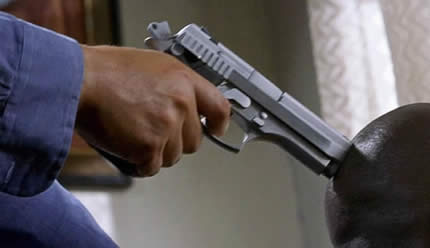The portrait and its treatment by artists
Knowledge Mushohwe Correspondent
Portraiture, the recording of an individual’s appearance and personality, particularly in a painting or sculpture, has often been a work incorporating two statements, one by the portrait artist about perception, style and skill and another by the portrait subject on his or her place in the world.
Thus, attire, pose and facial expression have always played a central role in portraiture over centuries.
From the time of the cave paintings to the present, changes in media, subjects, circulation, demand and technology significantly altered how portraits were developed from one generation to another.
Perhaps the biggest change came in 1913-1914 when the “Brownie”, the first mass-marketed and produced camera, was introduced to the public.
Since then, and especially after photography production was made simpler by digitalisation, portrait paintings, illustrations and sculptures have become less common, primarily because with a digital camera, one can get a more realistic rendition of the subject, using less effort and money than the older methods.
But portraiture was not always that easy or common.
The first sculptural portraits believed to have been developed in 22 000BC were discovered in present-day Austria and showed somewhat mythical figures. The figures were of pregnant women and it is widely thought that the ancient tribes worshipped them to encourage pregnancy among its people.
The purpose of the earliest portraits was community-based.
The portraits were closely related to rituals and religions and were most probably not developed based on actual human beings, but rather imaginary yet given idealistic features.
Later and in Egypt, the Roman Empire and in most ancient civilisations controlled by monarchs, rulers would oftentimes have God-like status bestowed on them and their portraits would be images fit enough to be worshipped and revered.
Portraits of pharaohs and other figures with deity-like qualities would be painted or carved on temples, tombs, palaces and any other places of spiritual importance.
For depictions of their leaders, Egyptian artists invented a technique named Frontalism, one that shows the face in profile but with a forward view of the body.
There was an obsession with idealism and the profile of a face was in their day widely considered to be the most appealing part of a human being.
Similarly, the front part of the body was thought to carry very high aesthetic value when compared any of its other angles.
Not much is known about the source of the paints but one possibility would have been coloured pigments derived from the natural environment, including leaves, flowers and soil.
One era where the media was well documented was the Renaissance period in Medieval Europe where exploration and experimentation resulted in marked improvements in the material used in developing portraits.
Initially, the early paint medium created by a mixture of egg and powered pigments served the artists well.
It wasn’t until a Dutch painter named Jan van Eyck discovered oil painting years later that others realised that a wider range of light contrasts and depths are possible.
The early stages of the Renaissance focused on religious subject-based portraiture but as oil paintings became more widely available depictions of the rich, the powerful and the respected gained more prominence.
Oil gave Renaissance artists more room for expression and their masterful understanding of form and perception gave the era a classical feel unmatched by any art movement before it.
The Renaissance was driven by a fresh emphasis on the perfection of the human form.
And because artists’ patronage shifted from the church to the local upper class, that permitted a wider range of portrait moods and subjects.
Development away from Renaissance, particularly with the introduction of Impressionism, Post-Impressionism, Cubism and Abstract Art transformed portraiture with more diverse options available.
In the post-modern era, technology-inspired portraiture within movements such as pop art, conceptual art, 3D art and digital art is now redefining visual art.
Beginning with pop artists that include Andy Warhol, Jasper Johns, Roy Lichtenstein, Robert Rauschenberg, portraiture became less for the affluent and more mainstream, reproducing images that were available within the public domain.
The post-modern era is a big pool with no one really dominating, but everyone trying to be different.
Even individuals on the foot of the social ladder, such as vagrants, street kids and the old and poor are often portraiture subjects.
The media can be anything and some are using unique materials that include bread toast, spaghetti, found objects and even human waste.
The visual representation typifies the modern form of portraiture.
It is conceptual as it exhibits the qualities of the late liberation hero.
There is fearlessness in the eyes and the face is tilted slightly upwards to show hope for a better future.
The pen is used to illustrate hatching, scribbling, and cross hatching techniques and the viewer can make out a relaxed yet pensive individual who has full knowledge and understanding of the objectives laying ahead.
Like in pop art, the image is well-known among Zimbabweans as it has been used frequently within the mainstream media.







Comments